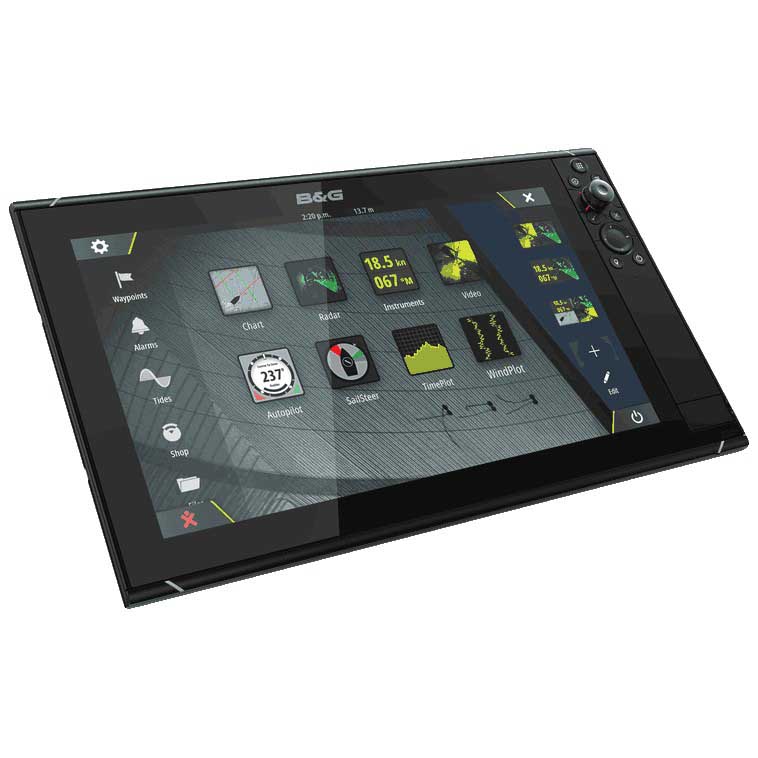She is going to be our home for the next few years as we start our adventures around the world. She’s a Nautitech 40 Open, built in 2018 in Rochefort, France.
Choosing a catamaran usually gets a couple of reactions. From our non-sailing friends, we get a “wow”, that’s lovely, combined with a bit of “ooo, you’re brave”. From our sailing friends, we hear “mmm, are you sure you don’t want a mono hull”.
It was a difficult choice, but in the end, our choice of a catamaran was driven by our lifestyle and where we want our sailing to take us. The catamaran layout allows us plenty of living space and most importantly, you’re living up above the water with amazing views of all the locations you’re visiting.
However, we also wanted to have decent sailing performance, so wanted a boat that sailed in light winds and can point to windward (more on that later). Add in some budget considerations and it led us to Nautitech as a brand.
And then what about size of boat. Well there seems to be a sailing adage that you go for the smallest boat you can comfortably get away with. At 40ft, we hope we will have enough space to stretch out, but not too big that the costs and complexity will be too high.
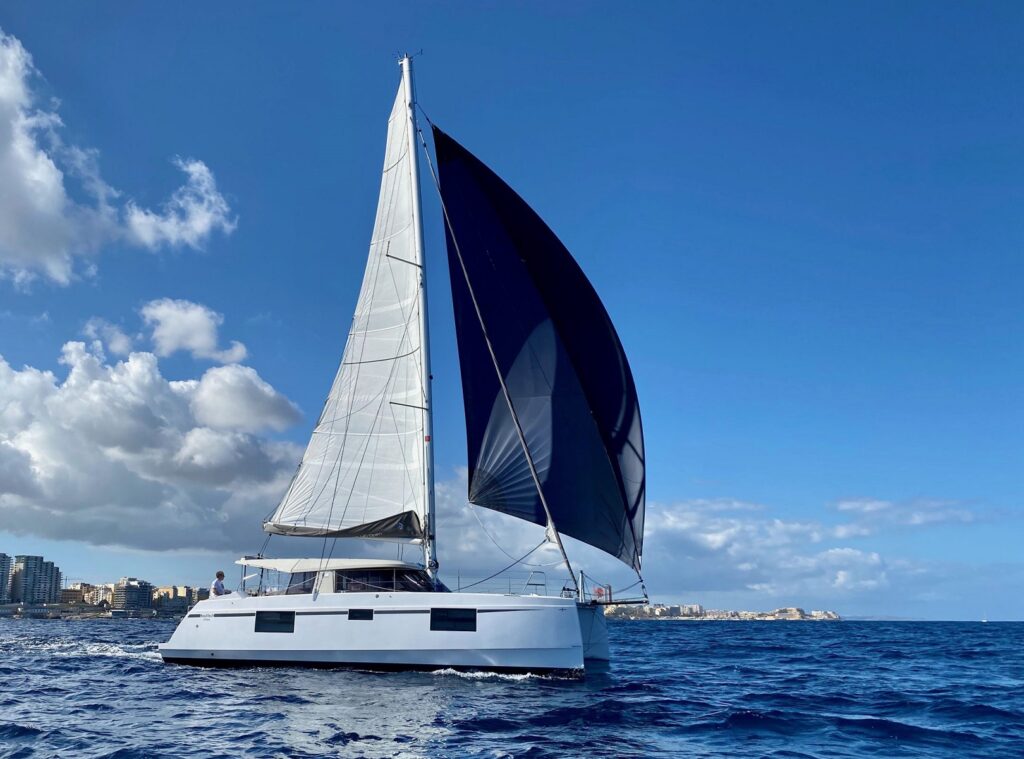
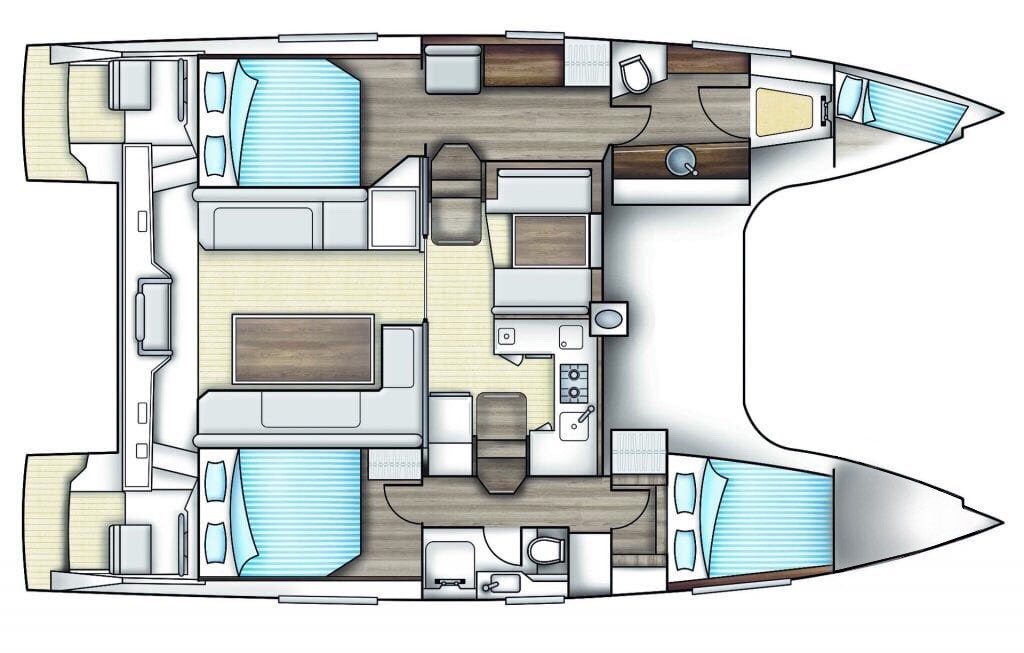
When buying a catamaran, you quickly realise most production boats are built in on of two configurations: the “owners version” and the “charter version”. This is to do with how many berths (bedrooms) the boat has.
We chose the owners version. In this setup, the port (left) hull is setup for the owner, with a master bedroom at the stern (back) and a bathroom suite up forward. You give up a bit of sleeping capacity for a more comfortable liveaboard experience
This design still means we have a guest hull for when friends and family do eventually come to visit.
One of the design features that makes the Nautitech is where you helm (steer) the boat from. She has two wheels, one on each side of the boat. This has a couple of big advantages, first makes the most of the living space and means you are also more connected to the outside for a fuller sailing experience.
So what’s the downside? Well, you’re outside and in the elements, so sun, wind and rain! it means you need to wear the right clothing and there will be watches / passages when we’re outside and wishing we were warm inside.
However, there is a great invention called autopilot, which means we can steer the boat from the warm inside if we want to. We will keep you posted on how things go here…
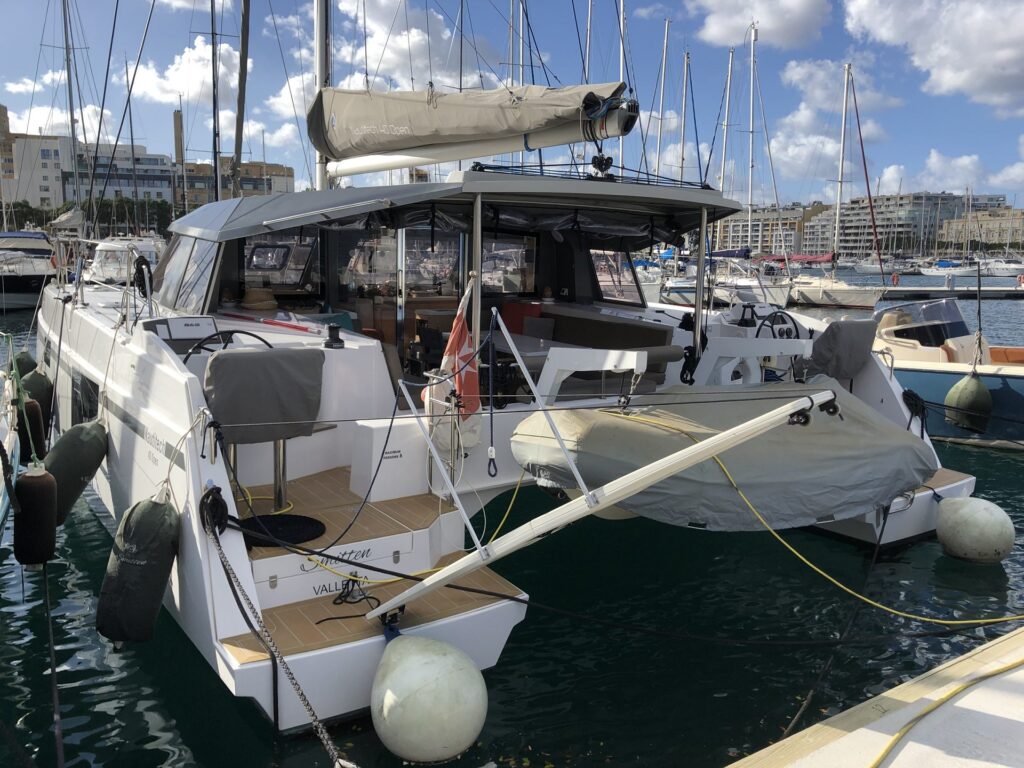
Once we had decided on a cat, we quickly realised we wanted something that could move quickly. Brands like Lagoon and Leopard have tonnes of space, but the wider hulls come at the experience of sailing performance. They need lots of wind to get them moving and they they’re not able to point to wind that well.
The attraction of the Nautitech is that sailing performance is part of its DNA. You can comfortably passage plan at around 6 knots and there are videos of them hitting a top speed of over 20 knots when surfing in a strong wind. You can also point into wind pretty well. She will get up as close as 30 degrees, but is much better at 40 / 45 degrees and make less leeway (for you sailors out there). Really looking forward learning how she performs.
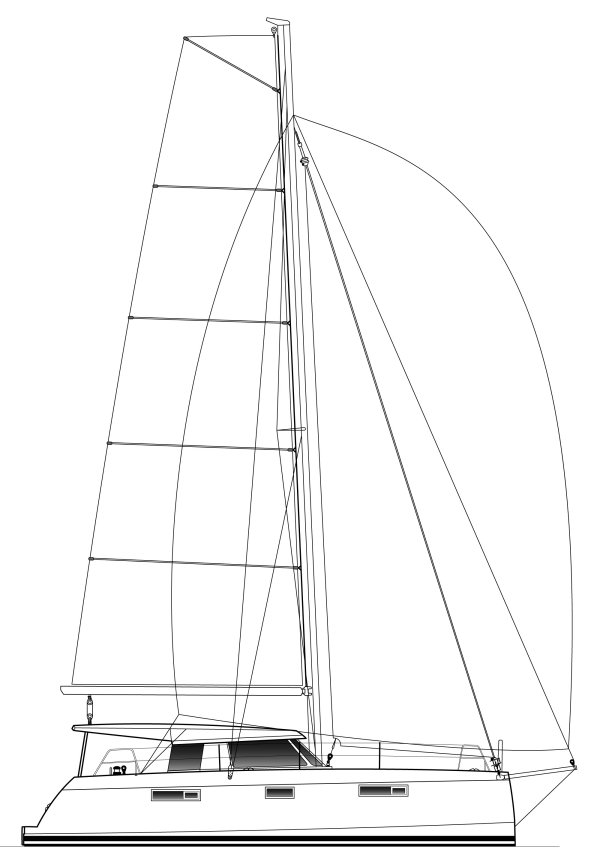
Length: 11.98m
Beam: 6.91m
Draft: 1.35m
Displacement: 8.5 tonnes
Engines: 2 x 30hp Volvo Penta
Main Sail: 63 Sq/m Fully Battened, Incidence
Filing Jib: 28Sq/m, Incidence
Gennaker: G1 Crusader
Nautitech’s come with a decent amount of kit and Nautilus is no exception. We have a B&G setup with equipement all over the boat. We can connect this up to our PC and iPAD, so look forward to exploring what is possible.
We have 650watts of solar at the moment, with a goal of increasing this up to over 1600watts so that we can be self-sufficient to run without shore power or the engine. We also have a water maker that produces 30 litres an hour. Depending on how things go, we may be upgrading this so we have more fresh water available.
Power is stored in a bank of 6 service batteries with 600Ah. These are Lead-Acid and we will probably be looking to upgrade to Lithium in the future. This is all connected up to a 3Kw inverter to meet our energy demands.
